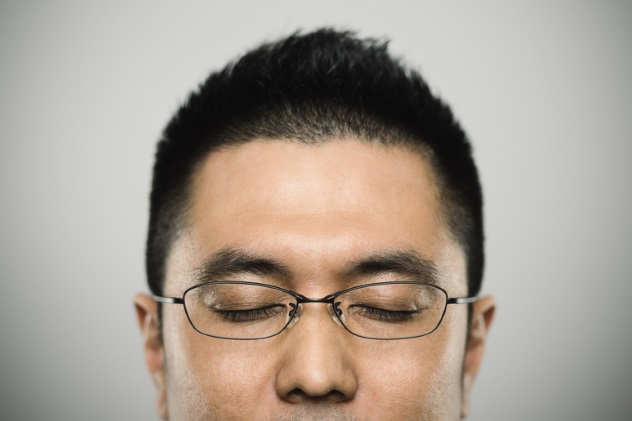 Weird Stuff
Weird Stuff  Weird Stuff
Weird Stuff  Mysteries
Mysteries 10 Tragic Disappearances and Deaths in Joshua Tree National Park
 History
History 10 Ways Childhood Really Sucked in the Old West
 Music
Music 10 Name Origins of Famous Bands from the 1990s
 Religion
Religion 10 Biggest Turnarounds by the Catholic Church
 Weird Stuff
Weird Stuff 10 Unbelievable Times Laws Had Unintended Consequences
 Humans
Humans Ten Historic Women Who Deserve Way More Credit Than They Got
 Movies and TV
Movies and TV 10 Films That Spawned Major Lawsuits
 History
History Ten Times Towns Were Wiped Off the Face of the Earth
 Creepy
Creepy 10 of the Most Disturbingly Haunted Public Houses in the UK
 Weird Stuff
Weird Stuff 10 Niche Subcultures That Are More Popular Than You Might Think
 Mysteries
Mysteries 10 Tragic Disappearances and Deaths in Joshua Tree National Park
 History
History 10 Ways Childhood Really Sucked in the Old West
Who's Behind Listverse?

Jamie Frater
Head Editor
Jamie founded Listverse due to an insatiable desire to share fascinating, obscure, and bizarre facts. He has been a guest speaker on numerous national radio and television stations and is a five time published author.
More About Us Music
Music 10 Name Origins of Famous Bands from the 1990s
 Religion
Religion 10 Biggest Turnarounds by the Catholic Church
 Weird Stuff
Weird Stuff 10 Unbelievable Times Laws Had Unintended Consequences
 Humans
Humans Ten Historic Women Who Deserve Way More Credit Than They Got
 Movies and TV
Movies and TV 10 Films That Spawned Major Lawsuits
 History
History Ten Times Towns Were Wiped Off the Face of the Earth
 Creepy
Creepy 10 of the Most Disturbingly Haunted Public Houses in the UK
10 Things Our Brain Does Without Our Help
Our brain is a vital part of our life experience. From the ability to think to the control of our muscles, our brain enables us to do everything. But what about the things our brain does without us consciously thinking about it? In this list, we’ll uncover the secrets of how our brain causes us to do things that we rarely—if ever—think about.
10 Filtering information
It goes without saying that every second of every day, we’re constantly flooded with information—so much information that it’s impossible to take it all in. Without looking, do you know what color socks you put on this morning? What about what the first person you saw today was wearing? If not, don’t worry, your memory isn’t fading yet! Our brain works constantly to filter out information we don’t need to consciously be made aware of. This allows us to focus on what information is important to us. For example, if you’re watching a game of football, you’re probably not aware of what’s going on in the crowd, even though your brain is perceiving this information.
This process is called selective attention and allows us not to be driven insane by the high levels of information that are typically present. Some information can, however, break through the barrier of our focus. This is why when we hear our name in someone else’s conversation, we instantly respond. An experiment to test this theory was carried out by Christopher Chabris and Daniel Simons at Harvard University, a clip of which can be view above. How many times do you see the players in white pass the ball? The answer might surprise you.
9 Blinking

Blinking is something we all do approximately every two to ten seconds; we only ever realize we’re doing it when someone points it out. (Now you’re probably going to read the rest of the list thinking about it.) But how does our brain manage to keep this process going with no conscious input? Blinking is an automatic reflex action, put in place to protect and maintain the moisture of your eye.
The outside corner of your eyes constantly produce tears. These tears are wiped away by the movement of your eyelids as you blink to keep your eye lubricated and clean. (This explains why our blinks are so evenly distributed.) The automatic system that regulates our blinking patterns also makes sure that our eyelids close when something is about to strike our face. Although we have the ability to stop the process when we think consciously about it (if you choose to have a staring contest), the automated system will eventually force us to blink again.
8 Moving Our Tongue Into Position To Produce Words

When we’re talking, the only thing we’re consciously thinking about is what we’re saying. What we don’t think about is the way that the muscles in our tongue and mouth synchronize together to enable us to verbally articulate language.
Initially, we learn to talk through imitation. We don’t necessarily imitate full sentences but rather piece together different words we hear before we start to be able to interpret meaning, creating a structure for our words to be placed in. As we are imitating and learning these new words, our brain has to think consciously about how to position our tongue to create the intended sound.
However, as our ability to pronounce each sound becomes more developed, our conscious mind is no longer involved in the process of positioning our tongue and lips; it has become an involuntary process. This explains why when we’re talking, we don’t consciously think about where our tongue is. The movements have already been learned by our muscles, and our brain automatically positions our tongue while we’re consciously thinking about what we’re trying to say.
7 Deceiving Us Into Thinking We’re Better

Imagine you have a child who really wants to be an artist, and they bring you a simply awful drawing which they seem to be very proud of. What do you say to them? Most parents would complement the drawing, even if they don’t believe what they’re saying. However, when the child grows up, they may look at the drawing and be horrified that anyone could ever have considered it to be good. When somebody gives us positive feedback, we build a belief that we fit the criteria we are described as. This changes our perspective of ourselves, meaning that we believe we’re better than we actually are.
This concept extends further than talents that have no scientific measurement. A study carried out in the documentary (Dis)Honesty: The Truth About Lies demonstrated how people who believe that they did well on a test are more likely to answer confidently in a following test, even though neither their knowledge nor the ease of the task has changed. In the experiment, participants were given the answers to the first set of questions at the bottom of the page and told that they may look at them if they wished to. Not surprisingly, they did very well on the test. In the second test, no answers were provided, but because the participants had deceived themselves into thinking they were better (even though they cheated on the previous test), they answered questions more quickly and did not erase errors. Despite their confidence, their results plummeted compared to the first test.
6 Regulating Temperature

Not only does our brain control our social processes, but it also regulates things inside the body, such as temperature. It’s vital to our health that our temperature stays at 37 degrees Celsius (98.6 °F); this temperature creates the perfect conditions needed for our body to carry out processes that keep us fully functional, such as providing optimal conditions for digestive enzymes to work in. But how does our brain manage to maintain this constant temperature without us having to ever think about it?
Our external environment is detected by sensory receptors in the skin. This information travels through our nervous system to the hypothalamus in the brain. There are also receptors in the blood that alert the hypothalamus to changes in our internal body temperature. Once the temperature is interpreted, the brain can take the appropriate action to make sure the body stays at the correct temperature. For example, if our external environment is cold, the brain will instruct the hairs on our arms to stand up, which allows them to trap more heat. However, if our external environment is too hot, our brain instructs the body to produce sweat, allowing us to lose body heat through evaporation.
5 Changing Our Memory

Many of us are under the impression that once we’ve experienced something, we will remember it just as it happened; any differences in our ability to retrieve information from the event are due to our memory of it having faded. However, a psychological study performed by Elizabeth Loftus and John Palmer in 1974 demonstrated that more goes into it than just that.
In the experiment, participants were shown clips of car crashes and asked a standardized set of questions about what they saw. The participants were put into different groups, all of which were asked the same question but with slightly different wording. The participants in two groups were asked what they thought the speed of the car was, but the verb used to describe the collision was “hit” for one group and “smashed” for the other. A control group wasn’t asked about the speed at all.
A couple of weeks later, participants were asked questions again about the clips they saw. This time, they were asked, “Did you see any broken glass?” There was no broken glass in the clip. Participants who were told that the cars “smashed” (and who predicted the cars to be at a higher speed) inaccurately recalled seeing broken glass far more than the participants in the control and “hit” conditions. This suggests that our brain can recreate elements of a memory from new information given to it, which becomes stored as part of our original memory, resulting in a false memory.
4 Maintaining Balance

When we’re walking, most of us don’t think twice about it. What we fail to consider is how much our brain is working to ensure that we maintain a stable balance. The brain works out how to maintain this balance through sensory input from the eyes, muscles, joints, and vestibular organs.
Our eyes are able to perceive the world around us through light hitting the rods and cones in our retinas, which send visual impulses to the brain, alerting it to where objects and other stimuli in the environment are in relation to us.
Muscles and joints are responsible for sending signals to our brain about the amount of stretch and pressure while walking. When we lean forward, more pressure is felt in the front part of the soles of our feet. Any movement made by our body parts sends a signal to our brain, which allows it to judge where we are in space. Cues given from the ankle also allow our brain to measure the texture and quality of the surface, which enables us to accurately sway in relation to the ground.
3 Making Us Sneeze

Sometimes the overwhelming urge to sneeze can seem to come from nowhere. Although sneezing can be caused by allergies or a stimulus causing an itch, more often than not, we don’t realize there is something in our nose bothering us until we sneeze to remove the irritation.
When we sneeze, the irritation is located in the respiratory epithelium lining the nose. Mast cells, such as inflammatory cells like eosinophils, produce chemicals such as histamine or leukotrienes. This chemical release is triggered by the irritating substance, which can be something that triggers as an allergen; filtered particles, a viral respiratory infection, or a physical irritant like smoke. After the irritating stimulus triggers the chemical release, vessels in the nose leak fluid, which ultimately stimulates nerve endings, causing itching. But how does our brain actually produce the sneeze?
The stimulation of each nerve ending activates a reflex response within the brain. The sensory nerves cause the activation of nerves controlling the muscles in the neck and head. The rapid air flow from the nose is achieved by a buildup of pressure within the chest while the vocal chords are closed (all which is part of the reflex action). As the vocal chords quickly reopen, the air flows out with high velocity, simultaneously removing the irritating stimulus.
2 Shivering

We’ve probably all experienced shivering when we’ve been out in the cold for too long. But what is it that actually causes our body to shake uncontrollably?
Shivering is another reflex action put into place for our own protection. The reaction is created by triggering the hypothalamus, which is located just above the thalamus in the brain. When sensory receptors in the skin detect a cold temperature in the external environment, our nervous system sends a signal to the hypothalamus to alert it to this information. The hypothalamus then sends signals to your muscles, causing them to rapidly contract.
Shivering raises our body temperature. Despite our best efforts not to shiver, it is out of our control, being a reflex action. Whenever your hypothalamus detects temperature below a certain point, it kicks in the shivering reaction, which will not stop until the temperature is raised above a certain point.
1 Laughing

Have you ever been in a serious situation where laughing would be completely inappropriate, yet for some reason you just couldn’t hold back the giggles? Don’t worry, you can blame your brain!
A paper published in 1998 gave some explanation as to how the brain is involved in our impulse to laugh. A girl labeled as A.K. is discussed in the paper after having undergoune surgery to control her epilepsy. The doctor discovered that stimulating a roughly 4-square-centimeter (0.6 in2) area of the superior frontal gyrus (part of the frontal lobe of the brain) always triggered laughter from A.K. This area of the brain is a part of the supplementary motor area. When A.K. explained why she was laughing, she thought of something after the laughter. This is usually the opposite for most people, as we perceive something as funny and then laugh as a response.
Authors of the paper believe that our experience of laughter is triggered by several different areas of the brain, each responsible for adding different elements to the experience. There’s the emotional reaction, the cognitive process of understanding why something is funny, and ultimately the uncontrollable part of the reaction, which involves the movement of facial muscles to create a smile. After interpreting something as funny, our physical reaction to the situation is created by our brain’s reaction, making is very difficult to control.
17-year-old student. Interested in writing and discovery.








